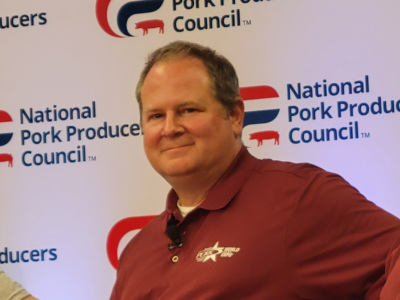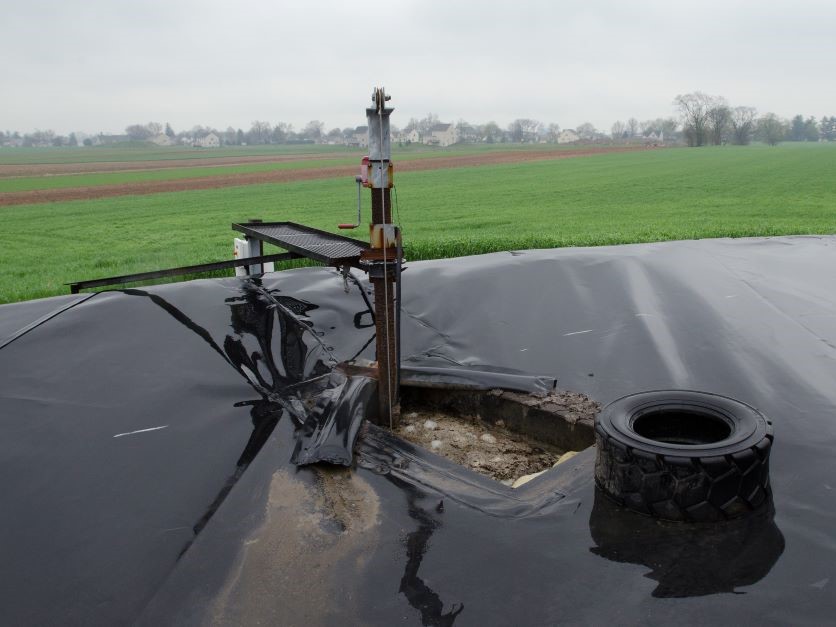Tax credits and funding boosts for on-farm energy programs through the Inflation Reduction Act could incentivize more farmers to install anaerobic digestion systems on their farms, a major part of the Biden Administration’s plan for reducing methane emissions.
The Biden administration is counting on the deployment of digesters to help meet the U.S. commitment to reduce global methane emissions. The administration's U.S. Methane Emissions Reduction Action Plan calls for more digester incentives through programs like the Environmental Quality Incentives Program, the Rural Business Cooperative Service, the Rural Energy for America Program and the AgStar Program.
The IRA expanded the Internal Revenue Code’s Section 48 to include tax credits of up to 30% for biogas facilities that begin construction before 2025. Solar and wind projects could previously make use of the credit, but biogas was left out.
The IRA also gave USDA's Rural Energy for America program a $2 billion boost, bringing the total number of available funds to $300 million. Biogas has historically made up a small percentage of REAP funding, though it could see more due to $144 million of the program’s IRA funding being earmarked for “underutilized” technologies.
The USDA-operated Environmental Quality Incentives Program also received additional dollars through the IRA, and it is possible that these funds could be put toward digester projects. But Milk Producers Council general manager Kevin Abernathy said this program, while helpful, has caps that limit how much money farmers can receive. This can be limiting, especially for Western dairies, he said.
“Those caps are completely insufficient for the cost of the projects that we’re doing,” Abernathy told Agri-Pulse.
Eighty-five digesters were under construction in the U.S. last year, while nine projects became operational, according to the Environmental Protection Agency. A total of 331 digesters are currently in operation, the agency says.
A major driver in the development of methane digesters nationwide has been California’s Low Carbon Fuel Standard, which allows fuel producers to generate credits for meeting carbon intensity requirements. At one point in 2021, UC Davis economics professor Aaron Smith calculated that each cow on a dairy farm would receive a subsidy of around $1,834 for the 22.5 million British thermal units of gas produced annually.
 Michael Formica, NPPC
Michael Formica, NPPCMichael Formica, the chief legal strategist for the National Pork Producers Council, said California's Low Carbon Fuel Standard has been the primary driver for methane digester projects on hog farms. Producers from other states can generate credits through the program, which has helped incentivize hog producers across the country to install digesters on their operations.
“There’s a lot of people who are experimenting and looking at it, but up till now those systems have been viable, as far as I can tell, simply because of California’s carbon market,” Formica told Agri-Pulse.
The value of LCFS credits has recently declined, however. They were worth $148 per ton at the beginning of last year, but dropped to $69 per ton by December 30. But the value of credits under the national Renewable Fuel Standard, which also allows biogas from digesters to generate advanced biofuel compliance credits, has increased, offsetting some of the losses, according to Michael Boccadoro, the executive director of a coalition of California dairy groups known as Dairy CARES.
Boccadoro said credit programs like the LCFS and RFS are important for providing farms or investors with a rate of return on their investments in digesters. While grant programs like California’s can help offload some of the costs at the front end, they often don’t fund the projects entirely.
“We're capturing fugitive methane and putting it to beneficial use, but the revenue from that beneficial use has to be there or none of this works,” Boccadoro told Agri-Pulse.
The EPA recently released a proposed rule for allowing car manufacturers to register with the agency and generate electric Renewable Identification Numbers for power produced using biogas from methane digesters. Boccadoro said this rule will be important as California transitions toward electric vehicle use.
A report released in December by three University of California, Davis, professors says anaerobic digestion, in conjunction with herd reduction, alternative manure management practices and enteric emission reductions strategies, should achieve a 40% reduction in dairy methane in California without the need for direct regulation of the industry.
Digesters would account for reductions of 4.15 million metric tons of carbon dioxide equivalents through 2030, the researchers said. So far, dairy digesters have accounted for approximately 90% of all manure methane reductions in California to date.
“Dairy digesters represent the most proven, efficient, and cost-effective opportunity to significantly reduce dairy methane emissions,” the report says.
The California Department of Food and Agriculture’s Dairy Digester Research and Development Program has helped fund 131 digester projects since 2016. It awarded $18.71 million in grant funding to 14 projects last year, after receiving a total of 27 applications requesting $35 million in grant funds.
“It costs more to develop projects here than in other states,” Boccadoro said. “So it's a really important program for our projects to make sure they can be competitive with the stuff that’s coming in from out of state.”
Interested in more coverage and insights? Receive a free month of Agri-Pulse!
But the Biden administration’s push to incentivize digesters and Congressional approval of IRA funding for digester-incentivizing programs has prompted pushback from Democratic legislators and environmental and animal rights groups. A coalition of 140 groups, for instance, sent a letter to the USDA in December asking the agency not to allocate conservation funding from the Inflation Reduction Act toward biogas projects.
 Michael Boccadoro, Dairy CARES
Michael Boccadoro, Dairy CARESThe groups expressed concern that subsidizing digesters would encourage farms to increase herd sizes, thereby increasing enteric methane emissions. The EPA’s AgSTAR program estimates that it takes 500 or more dairy cattle or 2,000 or more hogs for a methane digester to be profitable.
“These digesters really only work for very large-scale operations,” said Ben Lilliston, the director of rural strategies and climate change at the Institute for Agriculture and Trade Policy, one of the groups that signed onto the letter.
In the letter, the groups also worried that increased herd sizes could worsen nitrate and air pollution near farms. Conditions could worsen for families that live near concentrated animal feeding operations, the letter says.
This concern is shared by Sen. Cory Booker, D-N.J., who pressed Xochitl Torres Small, USDA's undersecretary for rural development, at a Senate Ag Committee hearing in November on whether the department planned to review REAP proposals for methane digesters to determine whether or not applicants were “double-dipping” with money from other federal programs.
“These large factory farms, in and of themselves, are bad enough,” Booker said. “But I believe the installing of big biodigesters on manure lagoons — it is not a solution. It’s rather just a form of greenwashing that doesn’t alleviate the suffering in the communities and doesn’t alleviate the harm they are causing in our environment.”
Torres Small, in response, said the department considers “environmental justice” when evaluating applications, but also believes that increasing investments can sometimes “reduce the environmental impact.” She said it’s about finding the “right balance” between providing more renewable energy and “sticking up for the people in rural America.”
For more news, go to www.Agri-Pulse.com.


